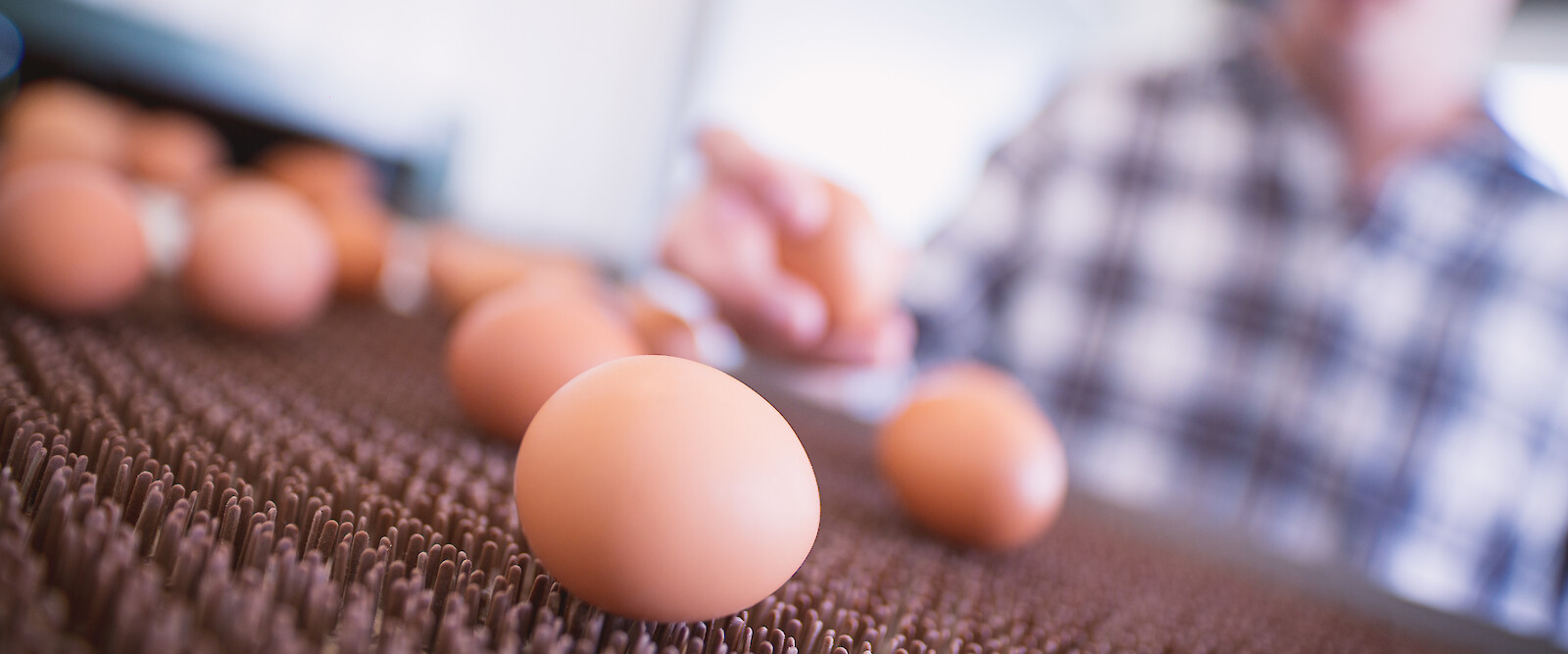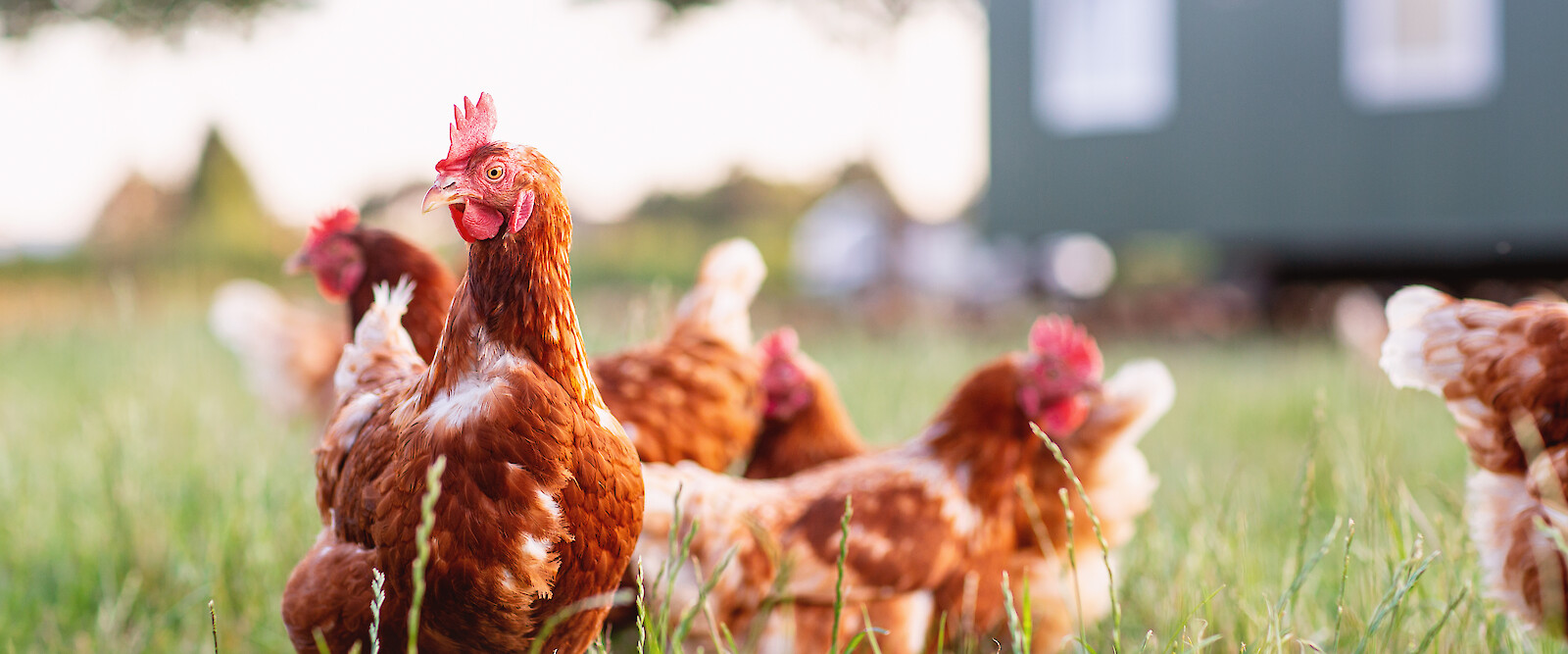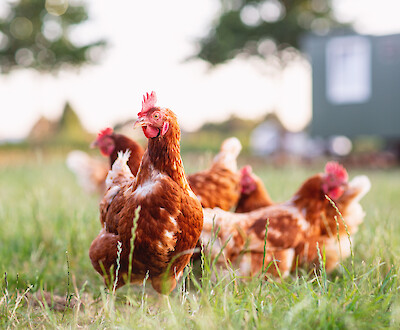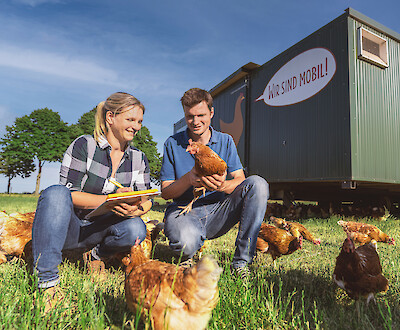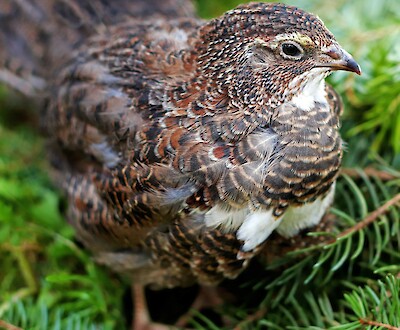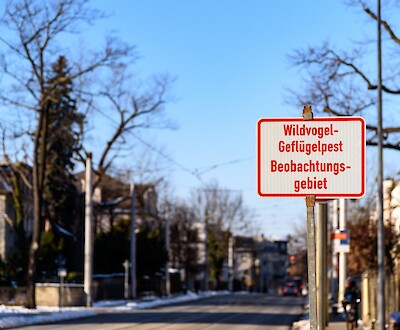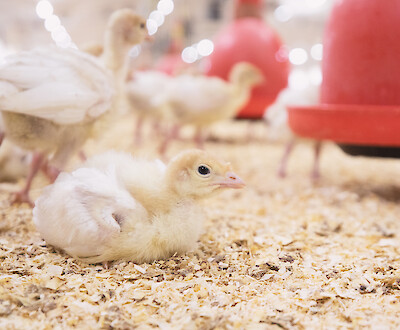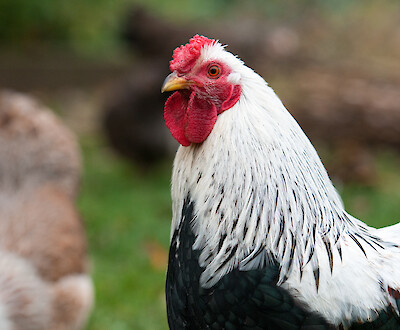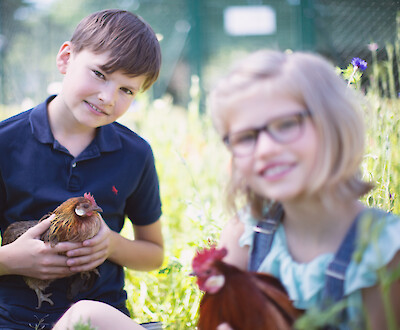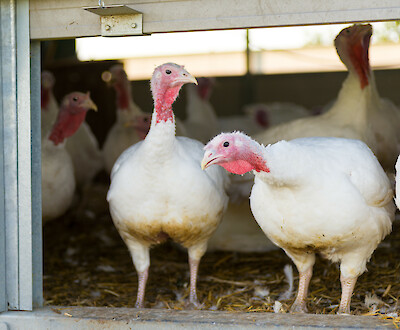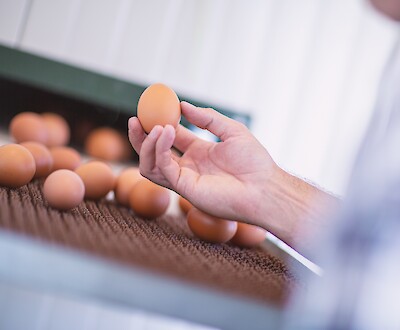My mobile chicken stable - Part 1: Guiding questions for purchase and preparation
This is what you should consider before buying the mobile stable
Poultry farming is booming. Many farms are adding their own fresh eggs to their range. But more and more private individuals are also keeping laying hens in their own backyards. So it's no surprise that more and more poultry lovers are toying with the idea of getting a mobile chicken stable. However, anyone considering a purchase should answer some basic questions for themselves.The following points will help you set the course for your new life as the owner of a mobile st.The following points will help you set the course for your new life as the owner of a mobile stable.
1.) Profitability: How can the stable support itself financially?
If you are considering mobile housing, you should first be aware of the expected costs and possible income. The focus here is on marketing the eggs and slaughter hens. Every mobile stable should be able to support itself financially after a transitional phase. Only when the economic viability has been clarified in principle, you can start with the detailed planning of your business "mobile stable".
Many stable operators rely on direct sales from the farm (e.g. with an egg vending machine). In addition, many offer their products for sale at weekly markets.However, mobile barn owners should always keep in mind that periods of high sales (e.g. Easter, Christmas) are followed by periods of low sales (e.g. the summer months). Your key questions must therefore be:
-
Here, your creativity is just as much in demand as your sales skills. From newspaper advertisements to the production of flyers, or the establishment of your own Internet presence, many things are conceivable. Organize yourself with like-minded people to gather new ideas for better marketing while exchanging ideas together.
-
To set the appropriate prices for the eggs, you should look at the regional market. Only competitive prices guarantee economic success in the long run.
Our mobile stable book tip
Further information on calculating profitability, concrete calculation examples and general information on distribution planning can be found in the book "Geflügel im Mobilstall" (Poultry in mobile stable) by the author duo Jutta van der Linde (animal husbandry master and consultant) and Henning Pieper (farmer and agricultural economist) from the agricultural chambers of the states of North Rhine-Westphalia and Lower Saxony. The book, published by Eugen Ulmer Verlag, deals with all important aspects of mobile housing. This article also takes up many ideas and considerations from this comprehensive work.
2.) Which mobile stable system is the right one for my project?
There are various mobile stable systems on the market for all conceivable purposes. Which one is the right system for your project depends on your requirements. The following factors are not to be neglected for your decision making:
The number of animals determines the minimum size of the stable.
Mobile stables that are not close to your own yard, or need to be moved more often, should have their own water tanks and feed silos. This saves inconvenient deliveries and time-consuming dismantling work during the changeover. If feed silos are too costly, feed can also be purchased in bagged form.
A supply via a self-sufficient system (solar) improves the mobility of your stable. In case of supply via the public power grid, you have the possibility to increase the technological equipment of the stable.
Modern mobile barns have a wide range of additional, technical equipment. Depending on how much manual labor you want to replace with machines, you can, for example, integrate egg or manure belts or control feeding via an automatic chain system.
Partially mobile or fully mobile stables?
It doesn't matter whether they are new or used: Basically, there are two different stable systems to choose from. If you are clear about the points mentioned above, the choice between partially mobile and fully mobile stable systems is usually self-evident:
Partially mobile stables are mostly on skids or supports. This means that they can only be moved over paved paths to a limited extent. These models are usually larger and can hold more animals. This can result in the turf being largely lost after just a few weeks.
Because fully mobile stables are easier to move, these types of barns are more often designed as stand-alone units. They can be repositioned very flexibly. Transport over paved roads is no problem. The good mobility means that the vegetation around the barn is spared.
Self-build as an alternative
In addition to products from established manufacturers, do-it-yourself construction can also be an option. If prospective mobile poultry house owners decide to go for the do-it-yourself option, they must comply with the legal requirements of the German Animal Welfare Ordinance (Tierschutz-Nutztierhaltungsverordnung, TierSchNutztV). The TierSchNutztV (Section 3, §12-15) regulates the space requirements of the hens as well as, for example, the trough width.
3.) What and how should I feed?
Depending on the number of animals, you basically have two options to choose from: Bagged items in 25-kg bags or bulk items (usually available in order quantities of three tons or more). Qualitatively, the feeds are identical. In addition, in order to guarantee optimal feeding management, practical handling of the feeds and feed hygiene should always be the decisive factors for product selection.
The aim of feed selection is always to provide the animals with the appropriate amount of energy and the nutrients they need. Feeding goals (e.g., desired egg quantity, higher shell thickness for more stability, etc.) also influence the choice of feed. It is not possible to make a blanket recommendation here.
To get a better picture of what is on offer, prospective mobile stall keepers should obtain information at an early stage from a country store in their region or discuss the matter directly with the field representative of Deutsche Tiernahrung Cremer.
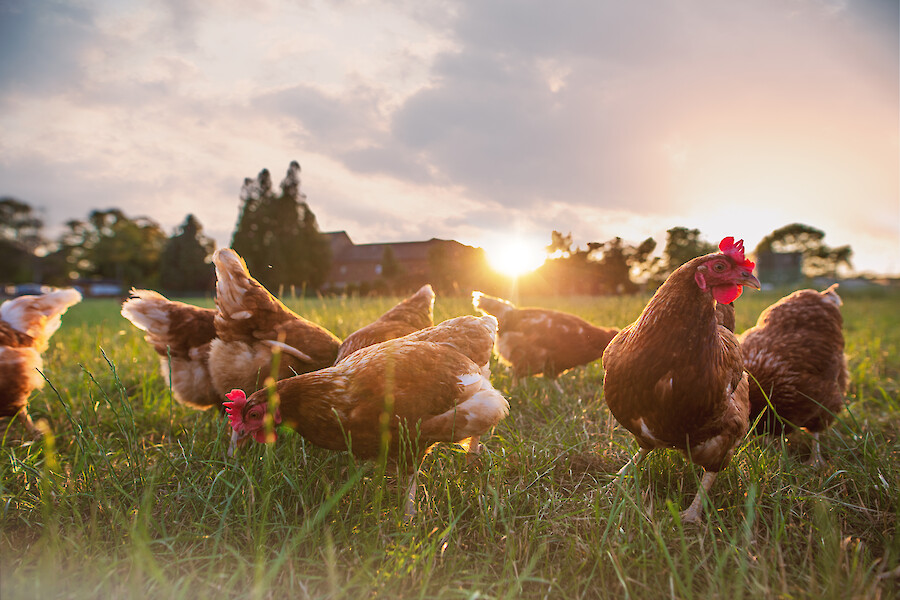
4.) How should I store the feed?
In principle, you should only buy as much feed as your laying hens can consume in a timely manner (usually less than three months). Therefore, calculate the feed quantity carefully depending on the flock size. The average consumption of a hen is about 120 g per day. In addition, you should always keep the feed dry and protected from direct sunlight.
Finally, remember that poultry feed is not only attractive to laying hens. Various rodents (e.g. mice), birds and cats are also attracted. Therefore, always take appropriate precautions during storage.
5.) Which official regulations and requirements do I have to observe?
Every mobile poultry unit is subject to a licensing procedure. The official procedures are prescribed nationwide, but are not uniform. Different factors such as the dimensions of the stables, the number of housed animals or the duration of the stand can be relevant for the approval. The number of stalls is usually irrelevant. Therefore, contact the building authority in good time and obtain all the necessary information. A clear list of the specifications applicable in 2019 can be found here (as of May 2019).
The following laws, guidelines and requirements are particularly relevant for prospective mobile home owners and are therefore worth reading carefully:
The guidelines of the Association of German Engineers (Verein Deutscher Ingenieure, VDI) allow an assessment of the technical and technological levels of livestock buildings with regard to emissions.
The working papers of the Board of Trustees for Technology and Construction in Agriculture (Kuratoriums für Technik und Bauwesen in der Landwirtschaft, KTBL) define general requirements for poultry husbandry. In addition to requirements concerning the health of the animals, there are also clear specifications for the design of the animals' living space.
The Odor Immission Guideline (Geruchsimmissions-Richtlinie, GIRL) serves to check and, if possible, avoid the nuisance to the population caused by unpleasant odors.
TA Luft is the abbreviated version of "Technical Instructions on Air Quality Control" ("echnische Anleitung zur Reinhaltung der Luft"). This is an administrative regulation issued by the German Federal Ministry for the Environment, Nature Conservation and Nuclear Safety (Bundesministeriums für Umwelt, Naturschutz und Reaktorsicherheit, BMU). The requirements listed in the TA Luft primarily concern pollutant emissions in the air.
Conclusion
- Regardless of whether it is a standard model or your own construction, you should intensively deal with the topic of "mobile housing" before purchasing.
- Ideally, you should inform yourself online or by reading the relevant guides, information provided by mobile housing manufacturers and mobile housing associations such as the Bundesverband Mobiler Geflügelhalter (BVMG).
- Give as much thought to the marketing of the eggs as you do to the marketing of the slaughter hens after the laying period. This is the only way to make your house profitable.
- Full or partial mobile barn: Inform yourself about the possible barn types and choose the right model for your project. A self-build can also be an option.
Further links
- Website of the Federal Association of Mobile Poultry Farmers (Bundesverband Mobiler Geflügelhalter, BVMG) - Europe's first and only mobile poultry house association

